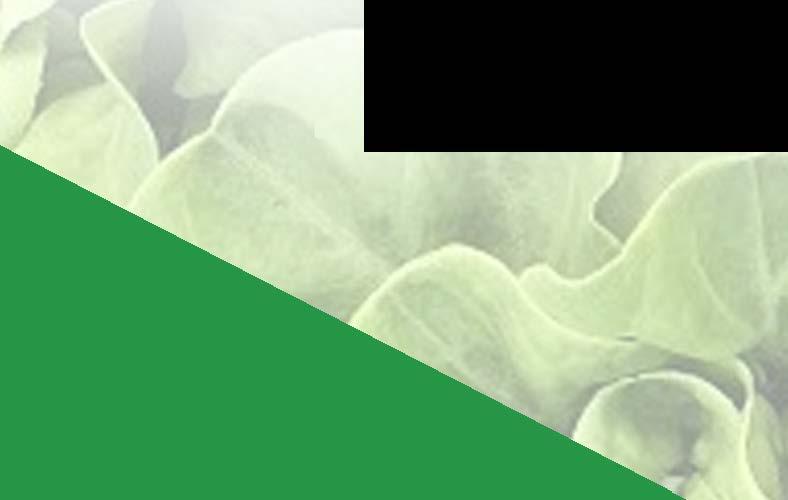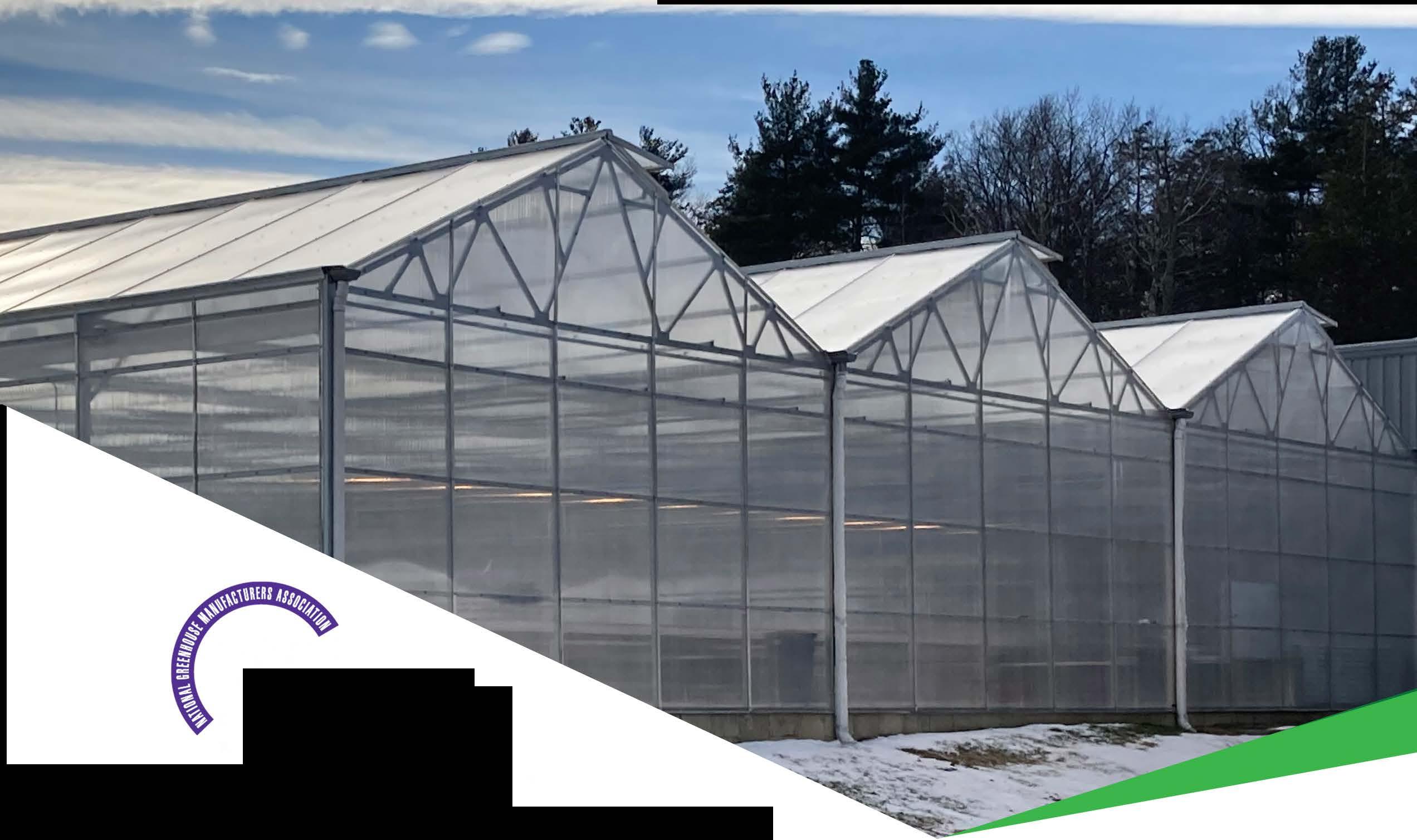Our Process


"As a commercial grower, I had been familiar with the Atlas name for a number of years. However, approximately 5 years ago, our CEO Jenny Harris and I met with Mark and Bill from Atlas about incorporating their greenhouses into some of our commercial Controlled Environment Agriculture projects. We knew of their reputation for quality and durability, and once we had discussions, we found the team to be extremely knowledgeable and helpful. An excellent team and an ongoing positive experience. I work directly with Heath Spradley mostly and he has done a tremendous job. Other team members, Mark, Bill, etc are all top notch professionals."

PRE
PERMIT APPROVAL CONSTRUCTION TURN-KEY LAUNCH
PROJECT START-UP
CONSTRUCTION
"An excellent team and an ongoing positive experience
"
-Joe Swartz, AmHydro
5
The most controlled environmental option available on the greenhouse market, a totally enclosed greenhouse utilizes traditional HVAC heating and cooling to consistently maintain the temperature and humidity to the exact set points desired and the ability to achieve those set points year-round regardless of outside temps or humidity. This is the most reliable way to maintain consistent temp and humidity levels throughout the year In this option, growers have the result of an indoor growing facility with complete control of temperature and humidity, but with the proven benefits of maximizing the power of natural sunlight!

In side-by-side comparisons with indoor grow facilities, the totally enclosed greenhouse option consistently matches or exceeds the yields of an indoor grow facility but at a much lower cost. The cost of production can be drastically reduced when natural sunlight is combined with enclosed environmental control. There truly is no substitute for the sun when growing plants. A totally enclosed greenhouse provides growers with a clean, exact condition while capturing all the benefits of growing in natural sunlight.



A Hybrid greenhouse utilizes the design concept of a Positive Pressure Greenhouse but adds one additional and very useful item, air conditioning. Hybrid greenhouses can utilize dehumidifiers, chillers, coolers, or traditional HVAC. This allows the grower to use the greenhouse as a traditional greenhouse most months of the year, utilizing outside air. During those months when the air is too hot, or more likely, too humid, the outside vents close and instead of pulling outside air into the greenhouse, chillers or air conditioners scrub the air free of humidity, mold, pollen, spores and of course lower the temperature. The cold air is then pumped into the cooling chamber wnere it is pulied into the greenhouse and distributed through the ducts under the crops root structure and is forced through the canopy.


During this period, the greenhouse remains closed, and the air is returned to the cooling chamber to be scrubbed of humidity and heat and then pumped back into the greenhouse. Many growers will argue that this is the best option available today giving them the ability to utilize many different environmental control options as the seasons change to make their operation as efficient as possible.

Positive pressure cooling achieves cooler, more consistent temperatures throughout the greenhouse and by its very nature and design, provides excellent insect exclusion as well. Positive pressure greenhouses are built with a totally enclosed positive pressure chamber on one end of the greenhouse and equipped high volume jet fans. These fans pull outside air through an evaporative cooling system and force this cool air into the greenhouse through convection tubes that are located below the benches. The cool air is delivered to the plant area forcing the hot air to the top of the greenhouse and out the roof vents.
Positive pressure systems create a more consistent temperature from one end of the greenhouse to the other, often achieving a temperature rise of less than 5 degrees, compared to a rise of 25 degrees or more with negative pressure systems. While negative pressure systems limit the greenhouse length to 120' or less, positive pressure systems can achieve consistent temperatures for much greater lengths, allowing more fiexibility in your greenhouse design. The positive pressure created inside the greenhouse provides a barrier of defense against insects entering the greenhouse through vent openings with the need for additional insect exclusion screens.

Positive Pressure chambers are often equipped with a Merv 13 Filtration System as an extra layer of defense against the entry of outside pollen and other undesirable contaminants. Our MERV filtration system is installed on the outer wall of the positive pressure chamber so that all outside air is filtered and cleaned before entry into the greenhouse.


The fan and pad cooling system consist of large volume exhaust fans and a continuous wet pad system, both properly located with respect to the greenhouse layout. The fans exhaust the air and develop a slight vacuum or "negative pressure" throughout the air-tight greenhouse. The vacuum draws air in through the cooling pad system, moving cool air through the growingregion and warmest area of the crop. The warm air is then expelled by exhaust fans in the opposite wall. This system produces a non-turbulent air fiow for best cooling efficiency.





9
We carry a full line of Modine Unit gas fired heaters. Standard models are the PTP 150400,000 BTU heaters. Available in LP or Natural gas. Equipped with Spark ignition and power vented exhaust and comes standard with a Stainless Steel heat exchanger and a 10-year warranty. Also available are the Effinity High Efficiency (93%) unit heaters. Models include the PTC 55- 310,000 BTU units. Effinity models dramatically reduce energy cost and CO2 emissions. These models come standard with spark ignition, power vented exhaust and require a vented air intake.



Scan to visit Modine online


10
Light management and temperature control are of utmost importance when trying to maximize yield and quality and lower energy costs. Intense sunlight and solar heat gain in the greenhouse can quickly create an environment that is detrimental to healthy plant (and worker) production. Automated retractable shade systems offer the solution. Additionally, during the greenhouse heating cycle these systems are designed to keep the heat from rising into the top of the greenhouse and away from the plants, thus reducing heating costs. Your specific climate control needs will vary depending on your geographic location, but with so many different climate screens available, there is a screen or combination of screens that will allow you to zero in on the ideal climate for your crop.


These automated systems work off a rack and pinion drive system that moves from truss to truss. Open and closed settings can be based on temperature, light intensity, or time of day. Multiple bay greenhouses can be operated as a single growing zone or broken into smaller zones to allow for more intensive management of different crop growth stages.



11
Light management and temperature control are of utmost importance when trying to maximize yield and quality and lower energy costs. Intense sunlight and solar heat gain in the greenhouse can quickly create an environment that is detrimental to healthy plant (and worker) production. Automated retractable shade systems offer the solution. Additionally, during the greenhouse heating cycle these systems are designed to keep the heat from rising into the top of the greenhouse and away from the plants, thus reducing heating costs. Your specific climate control needs will vary depending on your geographic location, but with so many different climate screens available, there is a screen or combination of screens that will allow you to zero in on the ideal climate for your crop.


These automated systems work off a rack and pinion drive system that moves from truss to truss. Open and closed settings can be based on temperature, light intensity, or time of day. Multiple bay greenhouses can be operated as a single growing zone or broken into smaller zones to allow for more intensive management of different crop growth stages.


Choosing the right covering for a vegetable greenhouse may be a little more complicated than choosing a traditional greenhouse covering. The key is finding the right balance of light transmission, light diffusion, and the right structural product for your climate. It sometimes requires compromising in one area to get the desired results in another.
Clear, light transmitting coverings include multiwall polycarbonate, corrugated polycarbonate, multiwall acrylic, and clear poly film. High light transmission is typically the highest priority but light diffusion percentage, anti-condensation properties, and insulation value also play a role in deciding the right covering for your location.
Corrugated polycarbonate generally provides the highest light transmission along with high light diffusion percentages but doesn't provide the structural rigidity of multiwall products. It is also more difficult to tightly seal a greenhouse with corrugated coverings.


Multiwall polycarbonate materials are generally a little lower in light transmission but provide more structural strength and rigidity as well as higher insulation value than corrugated polycarbonate materials.
Multiwall Acrylic coverings are very high in light transmission and can be purchased with UV Blocking or UV transmitting properties. This covering is offered in 8mm and 16mm thickness. Geographic location (snow and wind loads) typically dictate which thickness is needed.


Polyethylene films are by far the most inexpensive covering option. They are available in clear and with available additives that aid in sheeting of condensation and light diffusion. Poly films are most often installed as a double layer, with infiation blower fans used to infiate between the layers and create an air space that provides some amount of insulation.

Pest management and exclusion is an important strategy to implement into your greenhouse planning. We offer several methods that integrate these goals into each greenhouse project.

Insect Screen
Insect screens are designed by mesh size based on the target pest to be excluded. Tight mesh designed to target thrips and other small insects can greatly reduce air fiow and cause the greenhouse to overheat. To prevent the greenhouse from overheating, screens and cooling equipment must be properly sized to function correctly. Our team of professionals will design your greenhouse for the best results.
Double-Entry Rooms
Double-entry rooms are designed to create an extra layer of defense by serving as a pre-entry room before personnel enter into the greenhouse. These rooms are the most effective when designed with positive pressure air fiow blowing against the outside door opening. Fans or air curtains can be used to create the positive pressure for double-entry rooms.

Insect Exclusion Facility Designs


•Lean-To with Kneewall
• Greenhouse Extension
•Boxes over Fans
13
HPS & LED Lighting





HPS lights emit light in the red spectrum (600-700 nm approx.). This stimulates top growth, creates longer internodes, and encourages fiowering. Light emitting diode (LED) lamps are becoming more affordable with higher output. LEDs are offered with full spectrum lighting that ranges from blue to red. LEDs also run cooler than HPS and MH lights, generating less greenhouse heat build-up which allows light fixtures to be positioned closer to the plants.

14
Scan to explore P.L. Light Systems
Upgrading to an environmental controller is the best option for your greenhouse. The energy savings can pay for the installation of the environmental controller in less than a year in some cases. Additionally, the more precise temperature settings keep your crop at its optimum growing conditions resulting in faster crop maturity and a more uniform crop. Most step controllers offer two stages of heating and four stages of cooling and allow for day/night/DIF settings. These controllers are typically used in conjunction with relays that allow multiple pieces of equipment to be assigned to each stage.

Climate control systems include alarm notifications via text or email, input from a weather monitoring station and have the ability to monitor your greenhouse environment from your PC or mobile device.






� 15
• Seed WADSWORTH


































































